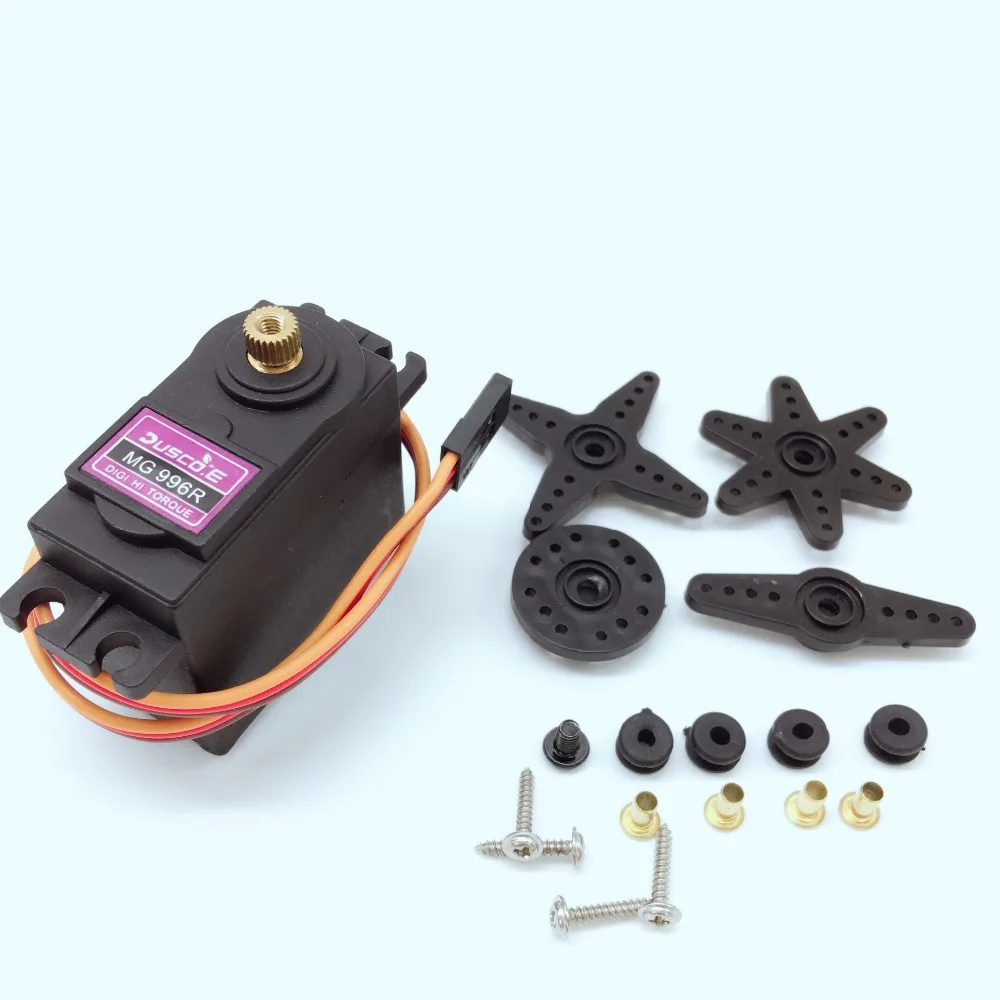

- #High torque servo motor arduino driver#
- #High torque servo motor arduino code#
#High torque servo motor arduino code#
Here is a small example code to brief the use of this motor practically. The wiring diagram to show the connections is provided below: Arduino Code
Connect the PWM input pin of the motor to the Arduino PWM output pin D6 to control and rotate the motor. Connect the power voltage pins of the MG995 Servo motor to the 5 Volts pin and the GND pin of the Arduino UNO. That is why each cycle of the PWM signal is of 20 milliseconds. Any value more or less leads to malfunctioning of the device. The concerned Servo motor can operate only at 50 MHz of frequency. The working principle of this motor is pulse width modulation. The MG995 Servo motor has a signal input pin to rotate the motor. The motor is energized using the power pins that are VCC and GND. Physical Dimensions: 40.7 x 19.7 x 42.9 mm approx. Maximum Load Current Consumption: 1200 mA. Operating Motor Speed 6 V: 0.16 sec/60 degrees. Operating Motor Speed 4.8 V: 0.2 sec/60 degrees. Pulse width modulation input pin that is used to control the axis of rotation of MG995 servo motor If performance is the most important aspect, a servo motor will do the job but be prepared to pay more.Reference Potential pin – Connect to the ground of power supply When your application is forgiving but your budget is not, consider a stepper motor. Servo motors are typically used in packaging, converting, web processing, and similar applications. The trade-off is a higher cost and complexity. Servo motors are a better choice for systems requiring high speed, high acceleration, and high accuracy. This makes these motors a good fit for medical, biotech, security and defense, and semiconductor manufacturing applications. Stepper motors also tend to be compact and inexpensive. To summarize, stepper motors are good solutions for applications with low speed, low acceleration, and low accuracy requirements. As a result, a stepper motor can be up to an order of magnitude less expensive than a comparable servo motor. Because of the high pole count and their ability to generate holding torque, they consume less power at zero speed. Stepper motors typically don’t require feedback, they use less expensive magnets, and they rarely incorporate gearboxes. The discussion above brings us to a final key differentiation between stepper axes and servo axes, which is cost. Still, at these resolutions, even a 200-step move corresponds to a fraction of a degree. Although we command stepper motors with a resolution of typically between 25,000 and 50,000 counts per revolution, because the motor is a spring-mass system under load, our typical resolution is 2000 to 6000 counts per revolution. If the drive commands a motor to advance 200 steps, however, it will do so to within just a few steps, which at that point represents an error of a few percent. As a result, a command to advance by five steps may only result in the motor turning four steps – or six. The motor needs to break friction to begin turning and move the load, at which point the rotor is not fully controlled. You can think of a stepper motor as a spring-mass system. Stepper motors also have performance limitations. As a result, it is unusual to find stepper motors capable of producing more than 1000 to 2000 ounce inches of torque. Stepper motors generally are not available in frame sizes larger than NEMA 34, with most applications falling in the NEMA 17 or NEMA 23 motor sizes. They are compact and generally economical (see figure 1). The high pole count allows them to generate very high torque at zero speed. Because they generate incremental motion, they are generally run open loop, eliminating the cost and complexity of an encoder or resolver. Stepper motors have a number of positive attributes. Because of the very high pole count, the motion appears to be continuous. #High torque servo motor arduino driver#
The stepper motor driver energizes each pole in sequence so that the rotor turns in a series of increments, or steps. Stepper motors feature very high pole counts, typically 50 or more. When current runs through the stator windings, it generates a magnetic flux distribution that interacts with the magnetic field distribution of the rotor to apply a turning force.

Stepper motors consist of a rotor with permanent magnets and a stationary stator that carries the windings. The decision tree for choosing between the two has many branches but the most important are speed, acceleration, and price target. When properly applied, however, both stepper motor and servo motor can provide effective, reliable power for a highly successful system. That holds particularly for servo motors and stepper motors. It is an engineering truism that there is no perfect solution, just the best solution for the problem at hand.






 0 kommentar(er)
0 kommentar(er)
